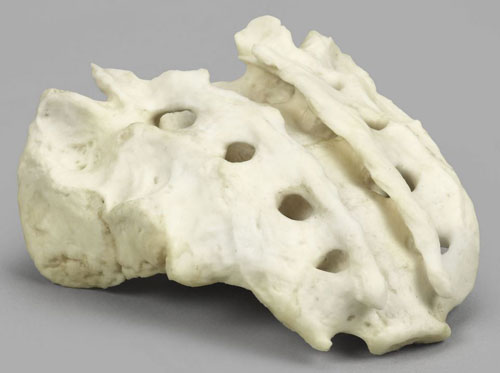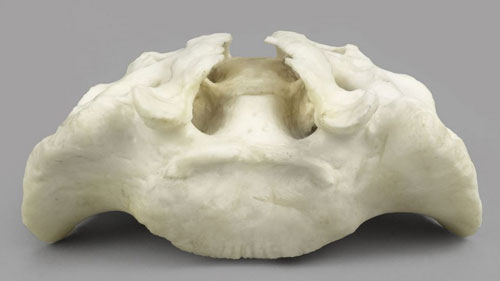Human: Bones
Human Sacrum with Spina Bifida
Homo sapiens
Sacrum with Spina Bifida.
Spina bifida is one of the most common congenital defects affecting the central nervous system, affecting 1 in 2,875 births in the United States according to the Centers for Disease Control and Prevention. It arises from a failure in the proper formation of the neural tube — the embryonic structure that eventually develops into the brain and spinal cord — during the first few weeks of pregnancy. When the neural tube doesn't close completely, the neural arch of the vertebrae may fail to form properly around the spinal cord and can result in the spinal cord protruding through the opening, leading to permanent nerve damage. Individuals born with spina bifida may experience a range of complications, including motor impairments, weakness or paralysis in the legs and feet, and bowel or bladder dysfunction.
Spina bifida is a complex condition and while its exact underpinnings are not fully understood, it has been linked to chromosomal abnormalities, genetic disorders, folate deficiency, and various environmental or maternal factors.
4" Long (10.2 cm)
Spina bifida is a complex condition and while its exact underpinnings are not fully understood, it has been linked to chromosomal abnormalities, genetic disorders, folate deficiency, and various environmental or maternal factors.
4" Long (10.2 cm)




Manufacturer:
| Bone Clones |  |
New
All prices plus VAT and shipping costs

